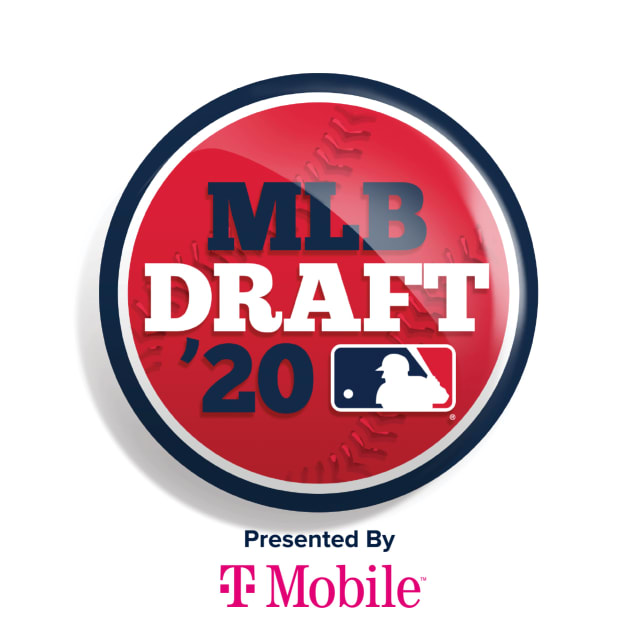Tigers score heavy hits with 2020 Draft class
This browser does not support the video element.
DETROIT -- The Tigers spent years accumulating high school and college pitchers at the top of their Drafts. They began to transition toward hitting last year with the arrival of high-schooler Riley Greene. But for the first time in recent memory, the Tigers will remember this Draft as the year of the college hitter.
It wasn’t just about top overall pick Spencer Torkelson, whose highlight home run reel will now be on countdown for arrival at Comerica Park. Detroit drafted five college position players, all from big-time programs, all with projectable power in their bats. Ohio State catcher Dillon Dingler (second round) and LSU outfielder Daniel Cabrera (Competitive Balance Round B) were potential first-round Draft picks before falling to Detroit. Along with Arizona State third baseman Gage Workman and high school infielder Colt Keith, the Tigers grabbed five members of MLB Pipeline’s Top 100 Draft prospects.
• Tigers Draft Tracker: Every 2020 pick
Now what? The signing deadline this year is Aug. 1.
If a club exceeds its assigned pool, it faces a penalty. Teams that outspend their allotment by 0-5 percent pay a 75 percent tax on the overage. At higher thresholds, clubs lose future picks: a first-rounder and a 75 percent tax for surpassing their pool by more than 5 and up to 10 percent; a first- and a second-rounder and a 100 percent tax for more than 10 and up to 15 percent; and two first-rounders and a 100 percent tax for more than 15 percent.
In eight years with these rules, teams have exceeded their allotments a total of 149 times but never by more than 5 percent. Twenty-one of the 30 teams outspent their pools last year.
The Tigers entered the Draft with a pool of $13,325,700 to spend, including $8,415,300 to spend on the top pick. That’s the second-largest pool among teams this year, and they’re expected to use the full amount to sign all six of their selections. That includes the high-schooler Keith, who committed to attend Arizona State but said he and the Tigers agreed on terms for a bonus amount prior to his pick. His fifth-round slot carries a $426,600 bonus, but the Tigers could go above that amount with money from other picks if they sign under slot.
“As long as the contract checks out, then I'm going to sign,” Keith said on a Friday afternoon conference call.
This browser does not support the video element.
Trend wrap: The Tigers didn’t go into the Draft with an all-hitter approach. General manager Al Avila told WXYT-FM on Thursday morning that they were debating a hitter (presumably Dingler) against a pitcher for their first pick in the second round. Once they picked Dingler and Cabrera was still available near the end of the second round, then the direction was set. They had long looked at Trei Cruz as an attractive pick in the third round.
“I think the way it rolled out, the hitters that we liked got to us,” scouting director Scott Pleis said. “Sometimes you just have to be a little lucky. And they’re good hitters. With analytics and scouting and everything merging together, we try to narrow the focus on better hitters.”
First-round fact: Torkelson is the first college corner infielder the Tigers selected in the first round since 1980, when they used the 18th overall pick on Sam Houston State third baseman (and eventual Major League outfielder) Glenn Wilson. Torkelson is the first college corner infielder to go first overall in the MLB Draft since former University of Miami third baseman Pat Burrell went to the Phillies in 1988. He, too, eventually became an outfielder.
This browser does not support the video element.
Day 2 name to watch: Cabrera has the combination of left-handed bat, physique and opportunity to move quickly in the Tigers' system. Since the collegiate baseball season ended early, he said he spent time in the weight room, worked on his running and improved his diet, gaining five pounds of what he calls good weight to jump to 200 pounds to go with a disciplined plate approach.
“I’ve always wanted to be a hitter first. I know the power’s going to come,” Cabrera said in a Friday video conference with reporters. “I want to believe I’m a hitter before I’m a power game. I want to put up numbers, but I also want to have a very good batting average.”
NDFA strategy: The Tigers did their usual preparation for a longer Draft in anticipation of aggressively recruiting non-drafted free agents. Each team can sign an unlimited number of such players for a $20,000 bonus. Since the money is equal, teams will essentially be recruiting against each other based on other factors.
The Tigers will have a presentation for players. Avila didn’t want to get into details on that, but their advantages are clear. As a rebuilding team, they can sell a clearer path to the big leagues. And as a team that has maintained its player-development department while investing in analytics and technology, they can sell their system.
“Our message is that we feel that we've enhanced infrastructure in this organization with the best technology, the best analytics, the best instructors,” Avila said this week. “And we have a good track record of developing players, and we have opportunity. It's a model franchise in that sense, and it's a great organization to join if your plan is to get to the big leagues. Our focus is to put back a championship-caliber team ending in a World Series win.”
One last word: “We wanted to get impact. I’m happy that we got these hitters, for sure. It sort of worked out in our favor, because we were trying to get impact.” -- Pleis
